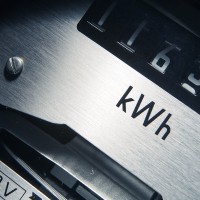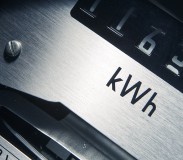
The Future of Electricity

The price of electricity varies from state to state across America and depends on a number of factors. For instance, power generation in the area, demand, state subsidies, and regulations can all affect the price of electricity in a particular state. In some cases, extreme weather is another factor that can drive up the price of electricity. The source of electricity available plays a role as well. Some sources of electricity, such as solar and oil, cost more than others. Renewable sources are more cost-effective than non-renewable ones in the long-term, although sometimes not in the short term. Variations in the price of electricity across the United States are significant. In 2012, residents of the state of Hawaii had the highest payment rate for electricity, at 37.34 cents per kilowatt consumed. Residents of Louisiana, on the other hand, paid an average of 8.37 cents per kilowatt in the same year.
History
Demand for electricity has grown in each subsequent decade since the 1950s. However, this growth is slowing with each passing decade. From 1949-1959, growth in demand for electricity was 9.8% in the United States, while the country has only seen 0.9% growth in demand every year since the Millennium. The impact of growth may be offset by gains in energy efficiency and rising standards for energy efficient household appliances.
Today
In the past two years, a total of six nuclear power plants have shut down across the United States, including the Vermont Yankee power plant which operate for 40 years. Ninety-nine nuclear power plants remain across the country. Electricity consumption in areas such as the Midwest and the Northeast was hardly affected by snowstorms in January of 2014. The sale of energy to residential homes is expected to grow by 0.9% by next year. Sales to residences are expected to increase by approximately 2% in the next two years.
Predictions
 Over the long term, the cost of electricity in the United States will be affected by growth in the country’s capacity to generate electricity. While there are occasional factors that cause demand for electricity to plummet – such as the Great Recession – growth in demand for electricity is expected to remain steady over the next twenty years. The cost of paying a monthly electricity bill should remain stable, taking into account both inflation and progressing to renewable sources of generating energy. Most regions in the United States will continue to be able to serve the demand for electricity among inhabitants.
Over the long term, the cost of electricity in the United States will be affected by growth in the country’s capacity to generate electricity. While there are occasional factors that cause demand for electricity to plummet – such as the Great Recession – growth in demand for electricity is expected to remain steady over the next twenty years. The cost of paying a monthly electricity bill should remain stable, taking into account both inflation and progressing to renewable sources of generating energy. Most regions in the United States will continue to be able to serve the demand for electricity among inhabitants.
Quick Wrap Up
Electricity prices will remain stable in the years to come. Demand for electricity across the United States will continue to grow at a rate of 0.9% per year. Additional unpredictable factors, such as economic recession may change the status quo at any given time. However, any additional demand will be offset by the spread of new, renewable sources of energy such as wind and solar energy.







